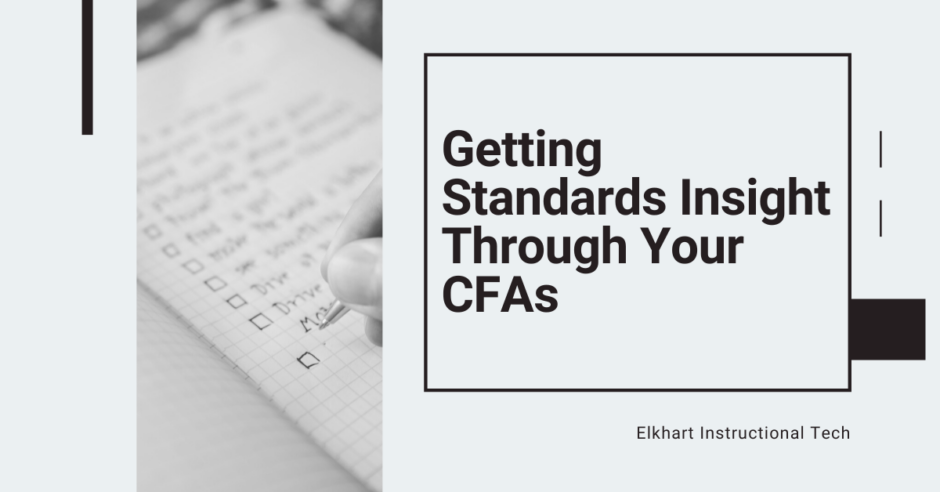Assessment strategies are critical components in any classroom. Assessments are tools for learning that are commonly used to drive instruction. However, despite their commonality, creating assessments which both measure evidence of learning (summative) as well as evidence for learning (formative) is one of the more challenging tasks as a teacher.
In this post, we’ll look at Common Formative Assessments (CFAs) as a tool for gathering standards-aligned data you can use in your PLC meetings.
Why use CFAs at all?
In the PLC process, CFAs are the tool used by teams to measure learning on essential standards across classrooms. These regular check-ins drive discussion as a team and allow you and your colleagues to group students into extension or support groups based on their performance.
Formative assessments are a two-way street: students give you feedback on their current level of proficiency by taking the assessment. You, then, are responsible for using that assessment to give students feedback on their learning and next steps. Your feedback should help them map out a pathway for growth. By mapping your CFAs directly to learning standards, your discussions always come back to learning. Standards provide an objective measurement goal that students are always moving toward. The teacher’s role is to help them take make progress by providing remediations, extensions, or supplementary materials to practice and demonstrate what they know.
CFAs and standards go together
When you’re looking at data, you should be able to map the student performance to an essential standard. Remember, your essential standards are the objective goals in the course – their purpose is to have a well-defined goal for learning. The structure of the CFA can include a single standard or a scaffolded check of multiple essential standards.
As a refresher, we’ve created this two-minute video on building a CFA that can be used to give standards-aligned feedback to students.
If you’re finding you cannot look at an assessment and be able to map that student’s performance to a standard, it’s time for a refresh. Here are some tasks your PLC can try out:
- Bring quizzes on the same topic and take time to map them to standards. Are you assessing the same things equally?
- Are your quizzes mapped to essential standards?
- Is your quiz frequency too low? Or too high? What are the inflection points you can use to get critical information about student learning?
If you’re already using CFAs as a team, you can take some next steps:
- Do the CFA results match student performance on larger assessments?
- For standards where students have shown proficiency, what strategies helped you get there?
- What accommodations, extensions, or supplementary materials you are using to help students make gains in their learning?
Our classrooms are never lockstep – we move at paces relative to our students. Through our assessments, we’re making sure students have both sufficiently demonstrated the current standard and are ready to engage with the next.
It can be tempting to delay a CFA until your gut tells you students are ready, but that undercuts the power in the information they can provide. Our gut and observations may tell us one thing, but CFAs give us an objective look at student progress on well-defined items. As a PLC, you can discuss what practices, lessons, or tools got one group of students to progress sooner rather than later. The CFA is the data to back up those instructional discussions.
If you feel like your students will “do poorly” on a CFA, it’s okay to give. These are formative – evidence for learning. The standards-aligned data will give you insight on how to support learning and provide students information on their own progress toward those learning goals.
Practical Steps for Moving Forward
If you’re looking for some practical ways to get started, here are some questions and tasks your PLC can try out:
- Bring quizzes on the same topic and take time to map them to standards. Are you assessing the same things equally?
- Are your quizzes mapped to essential standards?
- Is your quiz frequency too low? Or too high? What are the inflection points you can use to get critical information about student learning?
If you’re already using CFAs as a team, you can take some next steps:
- Do the CFA results match student performance on larger assessments?
- For courses where students have shown proficiency, what strategies helped you get there?
- What accommodations, extensions, or supplementary materials you are using to help students make gains in their learning?


